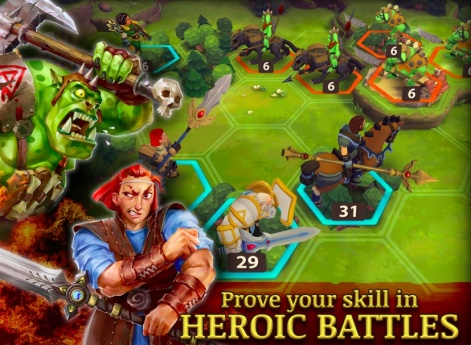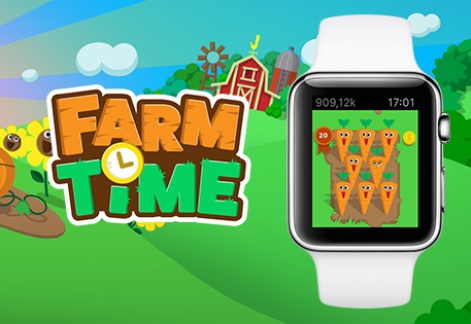PocketGamer.biz identified an increasing focus on midcore gamingas one of the key trends at GDC 2016, and it's a point borne out most explicitly by the Berlin-based mobile game developer Wooga.
Indeed, just before the conference began, Wooga announced that it had established its own core-focused studio, named Black Anvil Games and headed up by Wooga's former Head of Studio Wilhelm Oesterberg.
PocketGamer.biz caught up with Oesterberg, along with Wooga CEO Jens Begemann, in San Francisco.
Something different
“Supercell has a lot of influence, and because of Clash Royale, that makes many developers realise that it's possible to succeed with something different,” considers Begemann of the wider midcore boom.
For Wooga and Black Anvil, however, this is far more than simply jumping on a bandwagon; Begemann adds that “that's exactly what Wilhelm has been believing for over 2 years.”
Prior to Black Anvil being established as a separate studio, Oesterberg had been running a team inside Wooga that was working on midcore titles. In an effort to improve the clarity of vision on both sides, the 40-strong team has now been spun out.
“The key decision made at the end of last year was to keep Wooga focused completely on casual, because I really think you need to build a lot of competence in the genres you're in,” explains Begemann.
It's very hard to be the best in both midcore and casual at the same time as they have different requirements.Jens Begemann
He also notes that there is a different atmosphere and company culture at Black Anvil, right down to seemingly insignificant details like the colour of the walls.
“Casual games and midcore games are very, very different,” he goes on.
“If you run it as one unit and one company culture, it's very difficult to become the best in both at the same time because they have different requirements.”
Shot in the arm
The response from both sides has been reportedly positive, too, with the clear mission statement at each studio resulting in an energised and focused workforce.
One of the key differences between casual and midcore development is the ease of prototyping. Wooga has become known for its approach to quickly generating ideas and running with only the best, with a mere 10% of its prototypes actually making it to launch.
“On the casual side, it's really about creating a lot of prototypes and filtering them,” says Begemann.
“[But] when you have a very complex game, a prototype in a week is not really a realistic option - the two games currently in development at Black Anvil have already taken a different approach.”
Prototyping remains important in midcore, he explains, but “the ratio is much less extreme... it's more about fleshing out a detailed vision.”
Mobile might and magic
That's been very much the case with Warlords so far, a hex-based strategy title currently in soft launch that's set to be Black Anvil's debut release.
It's heavily inspired by Heroes of Might and Magic, but Oesterberg is confident that it won't be a case of square peg, round hole.
“For me, the idea was to take something with so much magic and to not adapt it to mobile, but actually make it perfect for mobile,” he explains.
You put auto-play in, something has gone wrong somehow.Wilhelm Oesterberg
Oesterberg goes on to recount an anecdote about a feedback session for an early build of Warlords in which even the fastest animation speed available was deemed too slow.
Since then, speed has been at the core of the game's design philosophy: “We can't let the art and animations get between the player and the game,” he says.
Manual
Many free-to-play mobile developers get around this by adding an auto-play function, but Oesterberg and Black Anvil is loath to do so.
“Everybody on the team more or less agreed that if you put auto-play in, something has gone wrong somehow,” he states.
“I realise it's not entirely true, because in some games it's more about the meta-game, but we wanted to make a game where your turns actually matter and there is a real skill component.”

This obviously brings about additional challenges: “If we have this simple tactical battlefield, how are we going to make it interesting 5,000 times instead of 100? If we really can't do it, maybe we'll have to retreat back to auto-play.”
It doesn't look like Black Anvil will be retreating any time soon, though - it's enjoyed “the best numbers we've seen” on any Wooga soft launch, despite its core sensibilities.
Time for wearables?
But moving away from Black Anvil, Wooga is still very much a casual games company. It's not getting caught up in the VR hype, but sticking to its guns by continuing to support smartwatch gaming.
“I still feel that if you go five years into the future and see how many people use VR versus smarwatches on an average day, smartwatch [usage] will be higher,” says Begemann.
“We've decided to be one of the very few companies to make this bet on smartwatch games, and it's clearly very early days.”

Putting aside a team of “less than 10 people at the moment” within Wooga dedicated to smartwatch game development, the firm's next wearable title - named Farm Time - is due in early April.
It's a simple, clicker-style experience that requires minimal interaction and feels at home on the wrist, with sessions optimised to take 10 seconds or less.
Wooga's approach to separating midcore and casual development is showing early signs of success, then, but the real test will come when the projects developed at Black Anvil - and a new-look, casual-only Wooga - hit the worldwide market.
And, with Warlords and Farm Time just around the corner, there's not long to wait.























